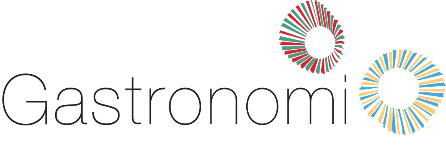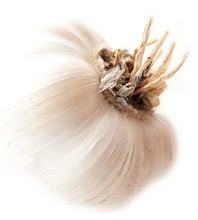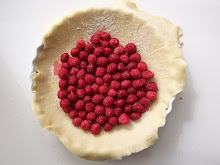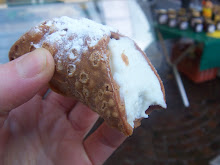
The countryside
The bus ride leading up to the village passes through small villages of shiny bright windows and rows of trimmed hedges. Grazing cows dominate the flatland; Black, brown, spotted and white, with the occasional reindeers, a picture of Danish serenity.
After 24 hours of traveling 1400km from Italy to the northern coast of Denmark I was greeted with Danish pastry and the opening shot for non-stop endless eating of Denmark’s quintessential cuisine.
The summerhouse sits in the middle of ‘as nowhere as it gets’, with rooms leading to narrow corridors intertwining backwards, with nic- nacs, antiques and lots of stuff to look at, a pantry full of Scandinavian goodness and a backyard bursting of green apples, red and yellow mini plums, blue currents and red, tarty gooseberries, green and red, all weighing down the trees and bushes, waiting to be picked.

I am in the backyard of a Danish summerhouse, and I am overwhelmed.
There is so much fruit that the majority of it finds itself on the ground and mostly enjoyed by the wildlife. The following days presented the challenge as well as the opportunity of finding as many uses for the abundant berries, and some that would not be tried were they not free and in endless quantity.
C is Danish in more ways then one. He likes order and takes pleasure in the proper way of doing things. I, on the other hand, prefer to approach rules and guidelines as recommendations, with a pressing need and strong urge to make a recipe my own, after all, rules are made to be broken.
Most of the time we balance each other out. MOST of the time. We began by preparing traditional Frikadeller, Danish pork meatballs, accompanied by red currents from the garden. The following day we got on a bicycle and headed out to lunch by the coast at the svinkloev badehotel, a seasonal hotel serving fresh Danish food by the Baltic sea in what is the only restaurant in the area. 2 hours and19.5 km later, with aching thighs, sweaty and windblown, a couple of foreigners entered a seaside restaurant (scandalously, 45 minutes past the reservation time), for a Smørrebrød.

The Local organic heather beer quenched my thirst and soothed my aching buttocks while waiting for lunch.
aper thin slices of rye bread arrived, spread with a coat of fresh salted butter, followed by a thick layer of remoulade topped with a rye-fried plaice and a slice of gherkin. Eaten with a knife and fork, as you do.
Dessert was a selection of cakes, mostly with almonds and marzipan, though practically all the other diners seemed to favor a cream explosion on a layer cake, as apparently Danes love their whipped cream.
I was still recovering from the long journey to Denmark, so the 38.5 km I had cycled that day pushed my limits even further. And I swear those cows were looking at me as if they knew me…
By the time we got home we had earned our dinner, traditional style; slices of rye bread and herring with schnapps, followed by a dish of fried potatoes, beets, onion and bacon, and fresh morels sautéed in butter and garlic, some currents and a venison fillet. All grown, raised and bought locally, with the wonderful invention of roadside shopping; a system based on trust, stalls by the side of a road offer local produce to passers by and a small piggy bank for the payment. Stumbling upon these stalls is as exciting as finding an oversized mushroom under a tree.
The following day we had lunch at a hot dog stand, a cheap and popular Danish lunch serving hot dog mit alles, the lot; ketchup, remoulade, fried onions and gherkins, with a side of crinkled fries. I have managed to acquire an addiction to remoulade. The hotdog is sold in a pristine clean fast food stand, almost making the act of purchasing and consuming fast food a cleansing experience.
Then there was a traditional Xmas rice pudding, eaten cold with hot cherry sauce, an Øllebrød, ale bread, a soup made of rye bread and ale, shots of pressed bloody red currents, a traditional potato salad as well as a cream layer cake.

The city
I soaked up the Danish landscape on the quiet, calm, punctual and smooth 6 hour bus ride to Copenhagen.
Once in the city I did as the Danes, and equipped with a pair of city headed to the nearest bakery. A seed bursting rye bread and several pastries later we headed to the town centre for a boat ride around the city, on what turned out to be one of those summer days of cloud, wind and some rain.

With fresh pastries, rye bread, remoulade, quality butter and beer, it is surprisingly easy to pass the days with only a faint hint of vegetables or anything remotely carb free…
I had only a couple more days in Denmark and I had still Danish food to try so it was decided dinner would be a traditional festive Xmas meal. We roasted a pork belly, complete with a top layer of crunchy skin, seasonal berries, Danish new potatoes, and cooked cabbage. Dessert was a tasting of flødeboller, cream ball. Industrial and grand cru versions.
A food item thought as indigenous to Israel, the Krembo is in fact of Danish origins. There are several main differences; the Danish version is an evergreen version, and is available all year round as opposed to the seasonal Krembo available only during the wintertime. The flødeboller has a wafer or a layer of marzipan instead of a moist cookie, and can come in several sizes (Large and small), a variety of finishes (white or dark chocolate, double coating, coconut topping), and either in artisanal or industrial versions. The main difference however, is found in the way of consuming the flødeboller – the Danes crush it on top of ice cream. Cookie side up! Fascinating.

The breads, butters, pastries and beer balance out with cycling. This is how one can get away with it!
A week in Denmark I ate pretty much all the Danish food I could find,
which was more then I could have hoped for.
I am a Scandi-fan.
Berries salad/ salsa
750g mixed berries (I used red & blue currants, red & green gooseberries, yellow & red plums)
a handful of chopped parsley
a handful of chopped chives
2 tbs chopped roasted nuts (I used pine nuts and walnuts)
Approx. 10 cloves of garlic cloves pickled in chili oil
2 tbs chili oil
Salt & pepper
Mix all the ingredients together before serving. Pair with meat dishes.


























